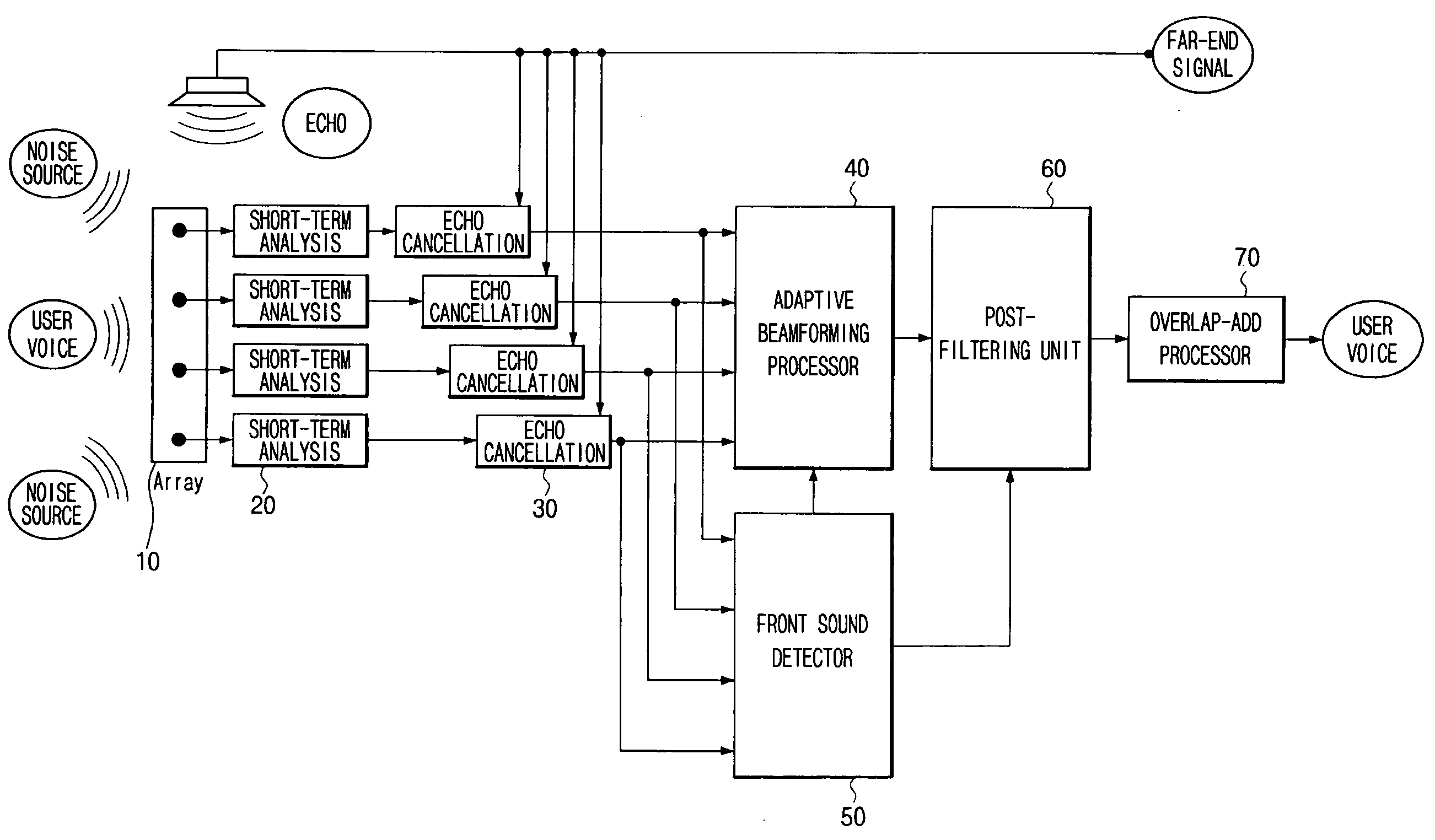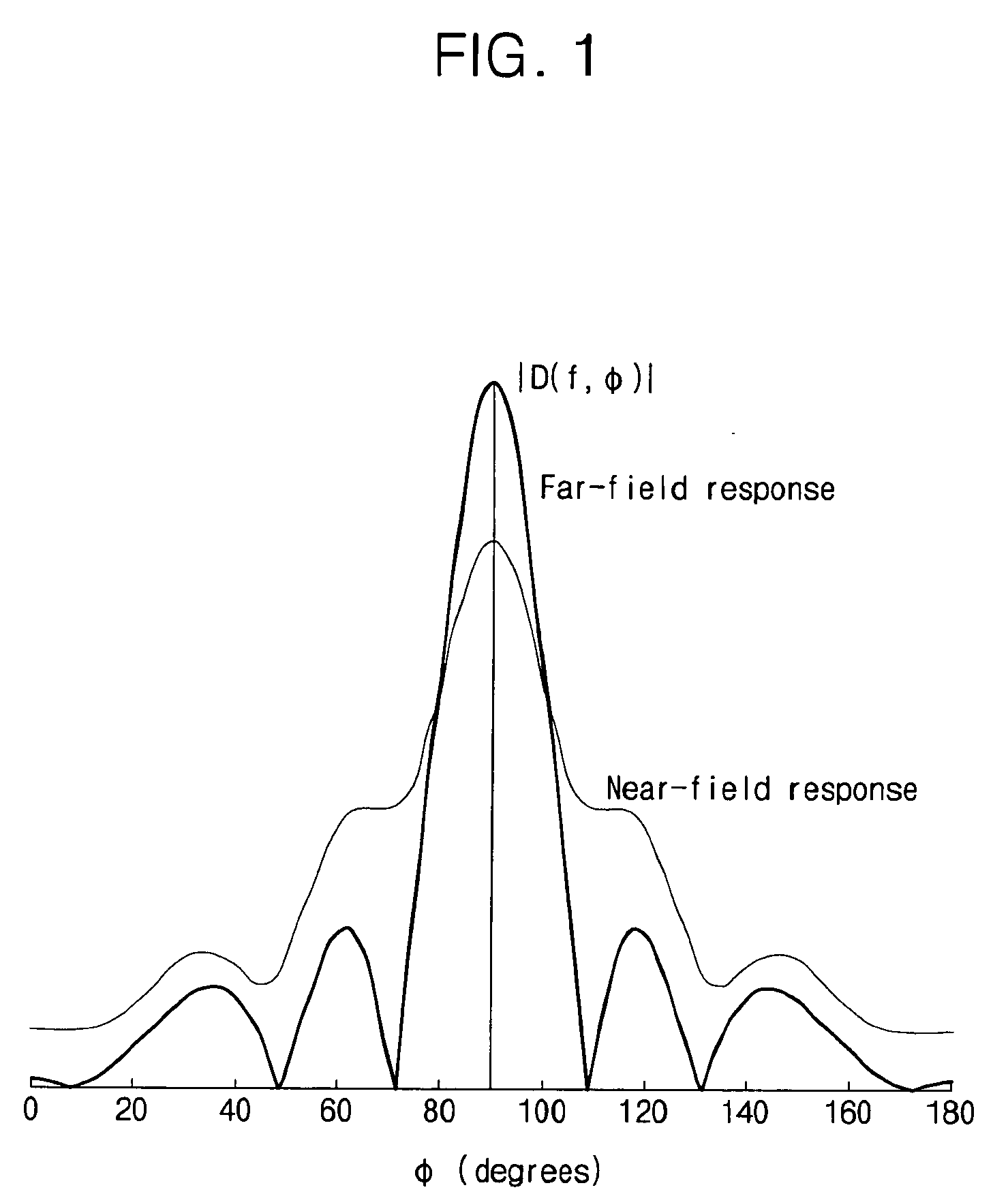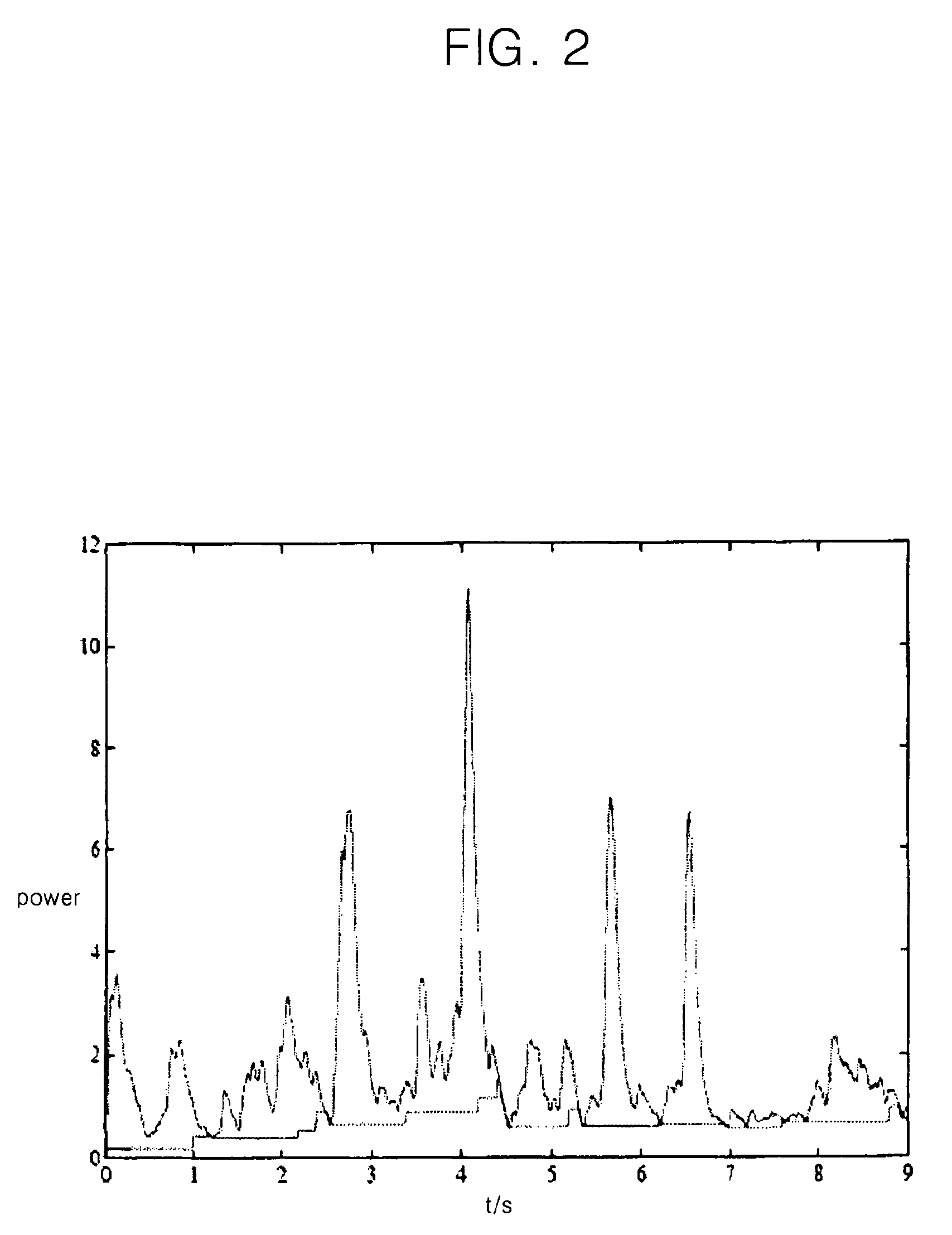Sound source separation method and system using beamforming technique
- Summary
- Abstract
- Description
- Claims
- Application Information
AI Technical Summary
Benefits of technology
Problems solved by technology
Method used
Image
Examples
Embodiment Construction
[0072]FIGS. 3 through 8, discussed below, and the various embodiments used to describe the principles of the present disclosure in this patent document are by way of illustration only and should not be construed in any way to limit the scope of the disclosure. Those skilled in the art will understand that the principles of the present disclosure may be implemented in any suitably arranged communications network.
[0073]FIG. 3 illustrates a block diagram of a conventional noise canceling system using a microphone array. The conventional noise canceling system of FIG. 3 includes a microphone array 10 having at least one microphone, a short-term analyzer 20 that is connected to each microphone, an echo canceller 30, an adaptive beamforming processor 40 that cancels directional noise and turns a filter weight update on or off based on whether or not a front sound exists, a front sound detector 50 that detects a front sound using a correlation between signals of microphones, a post-filteri...
PUM
 Login to View More
Login to View More Abstract
Description
Claims
Application Information
 Login to View More
Login to View More - R&D Engineer
- R&D Manager
- IP Professional
- Industry Leading Data Capabilities
- Powerful AI technology
- Patent DNA Extraction
Browse by: Latest US Patents, China's latest patents, Technical Efficacy Thesaurus, Application Domain, Technology Topic, Popular Technical Reports.
© 2024 PatSnap. All rights reserved.Legal|Privacy policy|Modern Slavery Act Transparency Statement|Sitemap|About US| Contact US: help@patsnap.com










